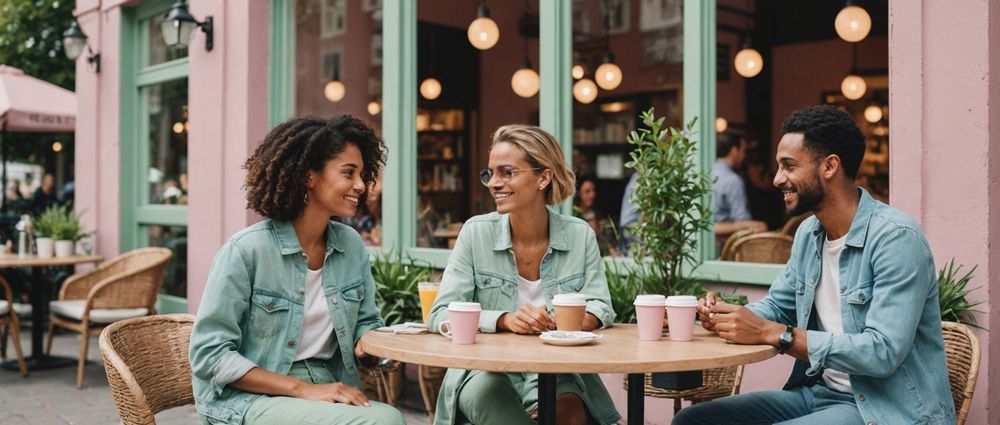5 Tips for Creating the Perfect Monochromatic Outfit
Monochromatic outfits, which consist of varying shades of a single color, can create a sophisticated and polished look that is timeless yet on-trend. In this article, we’ll explore five essential tips to help you master the art of monochromatic dressing. From choosing the right shades to incorporating textures, whether for a casual day out or a professional setting, these tips will elevate your style effortlessly. Read on to discover how to craft an outfit that stands out while keeping it simple and chic.
1. Choose Your Base Color Wisely

The first step in creating a monochromatic outfit is selecting your base color. Consider your skin tone, the psychological impact of colors, and the occasion. Some popular colors include:
- Neutrals: Shades like beige, gray, and black are versatile and work for any event.
- Bold Colors: Bright hues like red, blue, or green can be eye-catching and bring energy to your look.
- Pastels: Soft colors like blush or mint green create a more delicate and subtle appearance.
Take time to try different shades of your chosen color and see which one complements you best. A color that resonates with your personal style and inspires confidence is always a sensible choice.
2. Incorporate Different Textures

When wearing a monochromatic outfit, variation can come from using different textures. A mix of fabrics can add depth to your look, preventing it from appearing flat or monotonous. Here are some textures to consider:
- Silk: Soft and luxurious, perfect for blouses or dresses.
- Denim: Great for casual wear and can add a rugged charm.
- Wool: Excellent choice for layering in colder months.
- Leather: Provides an edgy touch and works great for jackets and shoes.
Experimenting with textures not only enhances visual appeal but can also make the outfit more comfortable and appropriate for various occasions.
3. Play with Shades and Tones
Monochromatic doesn’t mean wearing the exact same shade in every piece. To elevate your style, opt for a range of shades and tones within your chosen color family. Here’s how to effectively mix and match:
- Pastel Variations: Combine light blue with a deeper navy for a layered look.
- Gradient Tones: Create a gradient effect by starting with a light shade and gradually moving to darker tones.
- Accent Pieces: Use accessories like bags or shoes in contrasting shades for a pop of interest.
Playing with different shades ensures that your outfit has depth and avoids blurring into the background.
4. Accessories are Key
Accessories can make or break your monochromatic outfit. Thoughtfully chosen pieces can instantly enhance your look without introducing other colors. Consider the following accessory options:
- Belts: A belt in a lighter or darker shade can cinch your waist and add definition.
- Shoes: Opt for oxidized or glossy versions of your primary color to maintain cohesiveness.
- Jewelry: Minimalistic gold or silver jewelry can offer a stylish contrast without overpowering your look.
- Bags: Matching your bag with your base color can pull the look together seamlessly.
- Scarves: A scarf allows for layering and offers a chic touch, especially in colder months.
Using accessories wisely will not only tie your outfit together but also enable you to express your personality and style further.
5. Consider the Occasion
When crafting your monochromatic outfit, the context is essential. Different occasions may require different approaches to style. Here’s how to adjust accordingly:
- Casual: Opt for comfy materials like soft cotton or jersey. Pair it with sneakers or flats.
- Work: Select polished fabrics like structured linens or suiting materials, completed with formal shoes.
- Evening: Utilize luxe textures like satin or velvet for a sophisticated and glamorous look.
Always aim to align your outfit with the event’s tone while maintaining the monochromatic theme. This ensures you look appropriate and still fashionable.
Conclusion
Creating the perfect monochromatic outfit involves careful consideration of color, texture, shade, accessories, and occasion. By mastering these five tips, you can effortlessly put together stylish looks that are cohesive and chic. Whether you opt for a neutral palette or bold hues, the key to success lies in experimentation and embracing your unique style. Remember, less can be more, but always strive to stay true to yourself while showcasing your fashion prowess.
FAQs
1. Can I wear a monochromatic outfit in winter?
Absolutely! Monochromatic outfits are perfect for winter. Focus on layering with various textures such as sweaters, coats, and scarves to keep warm while staying stylish.
2. How can I make a monochromatic outfit look more dynamic?
Incorporate different shades and styles of clothing, use varying textures, and accessorize with unique pieces to create visual interest.
3. Is it necessary to match the shades perfectly?
No, it’s not necessary. Mixing different shades and tones within the same color family actually enhances the outfit’s appeal and gives it depth.
4. What colors are best for a monochromatic outfit?
Popular choices include classic neutrals like black, white, and gray, as well as bold hues like red, blue, and green. Choose a color that complements your skin tone and personal style.
5. Can accessories be in different colors in a monochromatic outfit?
While it’s best to keep accessories within the same color family, you can use subtle contrasting colors to add a touch of uniqueness without overpowering your look.
